Are you pondering how to get started with river fly fishing? Well, you don't have to have the skills of a mystical monk to succeed. All you need to do is check out the step by step guide below, provided by Drifthook.
Pull-on your chest waders, and get ready to start fly fishing in a river. All you need to begin is a fly rod and line, and a set of flies curated for your fishing adventure. All of which is the standard for trout fly fishing.
Although a basic understanding of the best locations, how fish behave, and the different techniques that can be used in river fly fishing are also invaluable. Luckily, you can find all this and more in the article below. 
The Most Important Thing In River Fly Fishing - Patience
Before getting into the nitty-gritty of things such as the type of reels you of lines you need, or whether to use a dry fly or a nymph, there is one thing that beginner anglers need to know. It is that to succeed in this watery pursuit, you will need to be calm.
We are, of course, talking about patience. A part of river fly fishing that is emphasized time and time again, by media, blogs, and experts alike. You just have to check out videos like the one below to get an idea of the level of patience you will need. Both to wait for that all-important bite and to overcome common river fly fishing problems such as the wind, water depth, or hatch times.
The real truth of the matter is that the effort goes into choosing the right locations gear and flies before they even hit the water. Even when they bite, the idea is to respond is the calmest way possible.
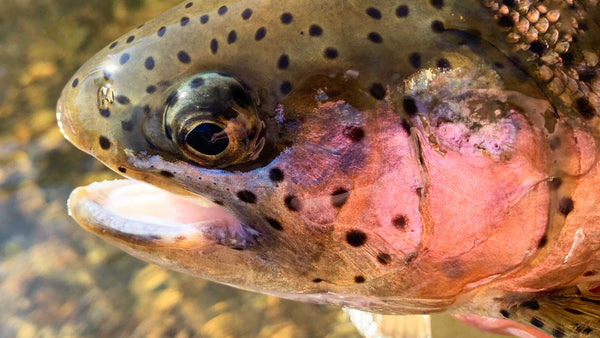
Choose The Right Location
The very first practical consideration you need to make when starting to river fly fish is where you will go to partake in this activity. It is this decision that will help to inform all of your other choices.
What that means is the specific locations will be home to certain types and sizes of fish. They will also have particular conditions such as wind, turbidity, and current that will affect what kit you will need and what techniques to use.
With that in mind, your first task is to locate a river suitable for fishing that you can get to. The things you will need to look for here is that such bodies of water contain fish and that you are allowed to fly fish there.
Of course, once you have found a suitable river, the next challenge is to locate the best spot to cast your line. The good news is that there are some strategies that you can use to determine this. Yes, of course, these do tend to be refined with experience. However, it can be great for beginning fly fishers to be aware of them as well.
Unlike still water fish, river fish rely on the current to bring food to them. The problem they encounter is that they have to stay in place, while at the same time not using up all the precious calories they have gained from feeding.
Yet, fish, as any angler knows, are clever things, and they have found a way to use the current to their advantage. There are particular spots that river fish will position themselves in to lie in wait for the food that will come their way. These tend to be where the current flows, but they also offer some protection from it. 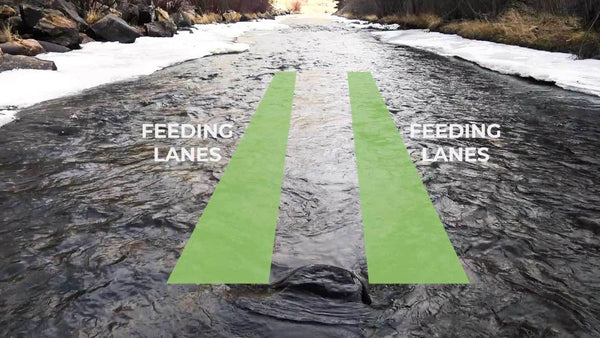
What this means is that there tends to be a wealth of fish to catch in the faster-flowing current. There can be advantages to fishing in such waters. The reason is that the faster the flow, the less time the fish will have to assess whether your fly is a good bet or not and so is more likely to bite. The optimal water flow is one mph. But it is almost impossible to judge on the surface as water currents typically are faster on top than they are on the bottom where the fish hold in there feeding lane.
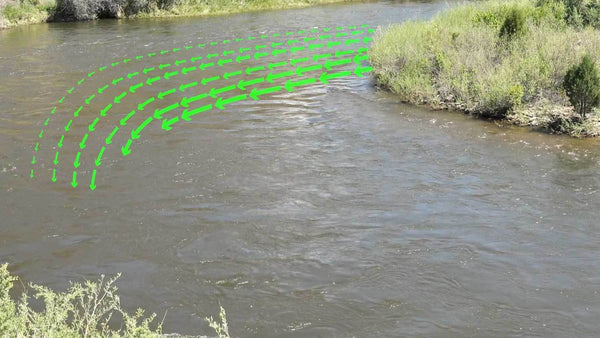
So the best to search for trout is in seams. Seams are where the fast water meets the slow water and lends itself to an optimal location for both a holding ly and a feeding ly.
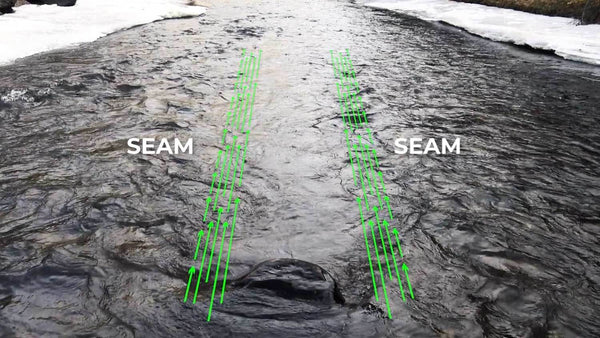
Also, as a beginner, remember that your casting precision may not entirely be up to par. What that means is choosing a spot where there is little tree coverage overhead, where your line can get snagged can help your first taste of the sport be a less frustrating experience.
There are also several angles in which you can fly fish when you are casting. We recommend when starting to cast 3/4 upstream. The 3/4 upstream will keep your line and rod out the viewing spot of the fish that you are going after.

After you have mastered the 3/4, you can look at trying to cast directly upstream and across But get comfortable with the 3/4 upstream first.
Of course, if you are looking for a particular recommendation, then the tailwater below Ruedi Reservoir Dam in Fryingpan River, Colorado, stands out as a great trout fly fishing spot. In particular for its gold medal Cutthroats, Brook, and Rainbows.
Alternatively, you may want to head on over to White River, Arkansas, which is also well known for its trout, although there are many more scenic and fish-filled spots to try though the US and the world!
If you are interested in the top 25 places we like to go fly fishing check out this article that we did on the subject.
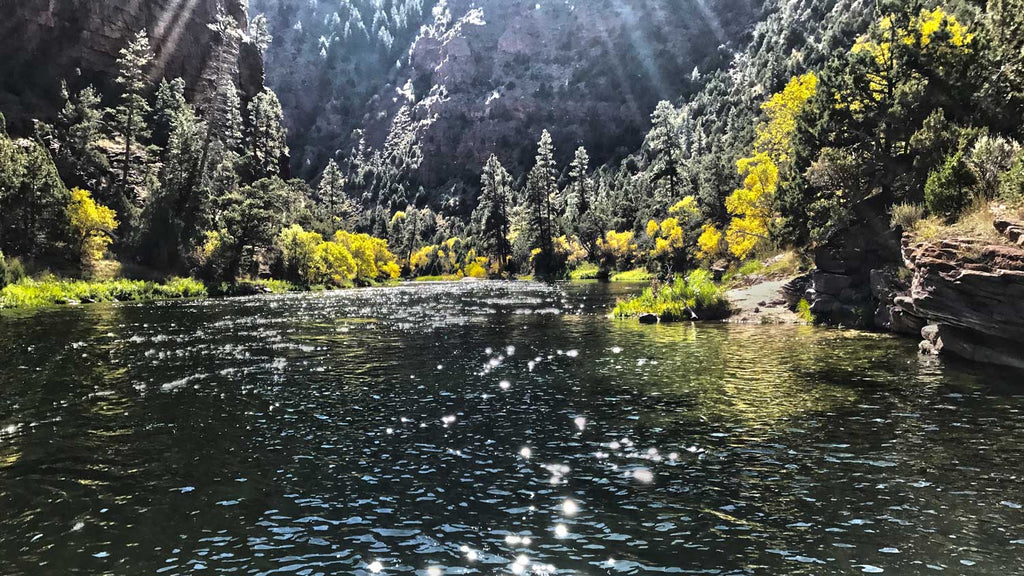
Pick The Right Time Of Year
Location is always the best place to start, and you can fly fish year-round in most parts of the country, but if you want optimal success, there are specific times that are greater than others.
This is for two reasons. The first is that fish, just like most other animals, are seasonal creatures. That is, their stocks ebb and flow depending on the time of year. Finding out the best time to fish particular breeds can be quite a complicated process. With categories such as state, and region coming into play.
What this means is doing some research into when the fish you are interested in and following the hatch chart below for the best flies to use during that time.
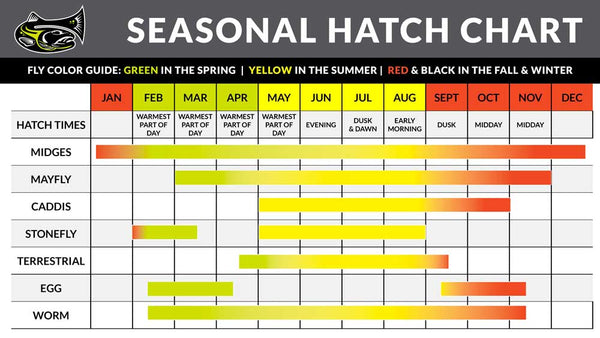
The second reason that river anglers needs to be aware of the season they will fish is for safety. This is because freestone rivers that are not regulated by dams can have large runoffs or have flash flooding when rainfall is heavy.
A safer bet is often to choose to fish in a tailwater river, especially for beginner anglers. This is because they do not rise or fall as quickly, as so can be more easily predictable and, therefore, safer for those just finding their footing in the sport.

Choose The Right Gear for Fly Fishing
Before we get into the details of the best techniques, you will need to fly fish a river lets first take a look at the equipment that is essential. Of course, the first type of supplies you will need to stock up on is fly fishing gear. The gear that you need can be broken down into a few more specific sections. These include your rod, reel, and the line system you use.
Fly Fishing Rod
The first thing to invest in when flying fishing a river is the right rod. This means understanding how to choose the right weight. There are a variety of factors to consider when picking out a fly rod. What type of fish are you going after? What style of fly fishing are you doing?
While others choose to use indicators like the flies, they will use, the strength of the wind where they will fish, and even the size of the catch they hope to reel in. Most anglers go for a weight of 3-6 weight rods for river fishing for trout and 7-10 weight rods for fishing for steelhead or sea-run trout.

Others use the type of water that they fish in to determine their choice of rod. With anglers choosing to fly fish in saltwater, sometimes going up as far a 9wt to ensure that their rod can hold up to the more extreme conditions they will encounter.
Additionally, size does matter when it comes to rod selection, not just weight. With that in mind, those fishing in small streams and rivers can get away with a 5ft-er, While open water fishing in lakes or the sea will require a rod of around 9ft to 10ft.
My favorite all-around rod is a 9ft 6weight rod.
Then there is the action of the rod you choose to consider. Rods come in three types, slow, medium, and fast. Typically a medium action fly rod is best for beginners as the action or bend of the rod will help with the cast. Fast action rods are designed for specific uses such as hucking large streamers or big hoppers in the wind.
Try out a handful of rods to find out what feels best in your hand. I have several rods that I like to bring on any given trip just in case the conditions demand them.
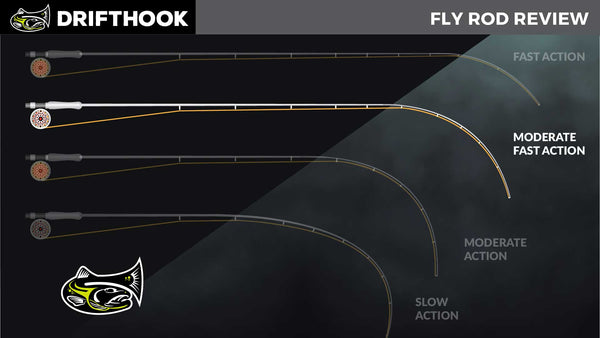
Fly Fishing Reel
While your rod choice is essential, the reel you pick for fly fishing a river is also vital to your success. This is because as you play the fish and reel it in, they essentially act as line holders, something that means they need to be as robust, yet as flexible as possible.
Again you can choose your reel by matching it to your line weight, with the smaller diameter reels being for lighter lines while the broader reels are used for heavier lines. In most cases, if you have a 5wt rod, you will pair it with a 5wt reel. But balance plays a crucial factor on your rod, so make sure you test it out on a rod before making a purchase. Some times the manufacturer specs are correct, and other times they could be better.
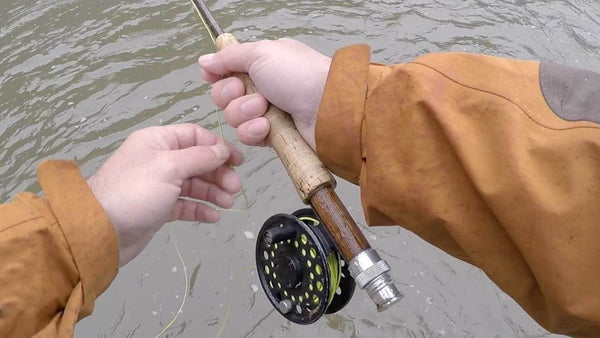
I recently purchased a Euro Nymphing 11ft 3wt rod that they recommended a 3/4 weight reel, and I found that my 5wt reel balanced out the rod perfect. The 3/4 weight reel placed the balance point about 4 inches up the rod.
Consider also the material that your reel is made. If you are looking to keep the cost of fly fishing low, you may opt for a molded composite reel, as these tend to be the best value for money, although many anglers enjoy spending extra on a machined aluminum reel because of their sleek look.
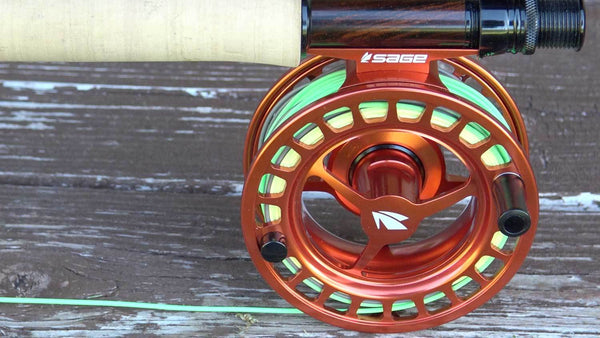
Also, when playing a fish, the drag that your reel produces matters as well. That means you need to factor this into your reel choice too. Of course, drag is dependent on the interplay between the fish and the drag system you use. This will lead anglers looking to land bigger fish to opt for disk drag reels. The reason being that they are heavier and more robust, and so are likely to be more effective when you have a whopper on the line! While those looking for smaller quarry tend to opt for spring and pawl systems instead.
The majority of reels on the market today all have seeled drag systems that require very little maintenance, if not any at all. So it comes down to personal preference on the look, sound, and retrieval rate.
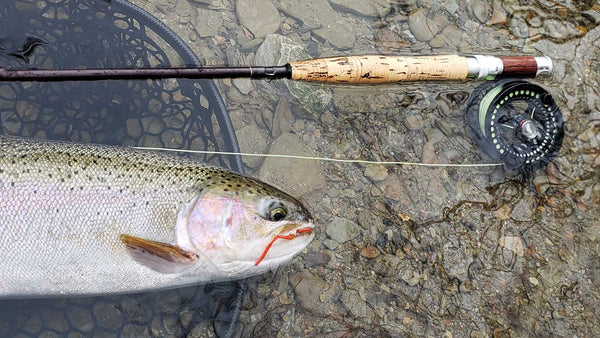
Fly Fishing Lines
Finally, before you can pull on your waders and get chest-high in the river, you need to make sure you have your line choice right. Now, many new anglers can find this choice intimidating. Mainly because of the sheer number of factors that go into the selection. With the line type and the leader choice (the connection between the fly and fly line), both requiring careful consideration.
However, you will be pleased to find out that just like the rest of your gear options, you can tailor your line to the specific need of your trip.
For example, when picking your line, you need to factor in the type of water you will be in, the kind of fish you will be catching, and the weight of the rod you will be using.
Lines size is typically paired with your fly rod. So if you are fishing a five weight rod, get a five weight reel and a five weight line.
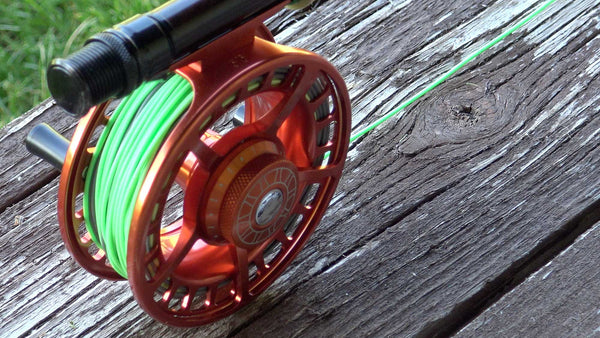
Fly Fishing Leaders and Tippet
Once you have your line picked out, you will still have the task of picking the correct leader. That is the connection between the line and the fly itself. The key consideration to make here is the size of the fish you will be landing with the more significant the fish needing the more heavy leaders.
The X System is a manufacturing system to choose what type of leader and tippet you will need for a specific size of trout. Check out the image below for the leader and tippet sizes recommended.
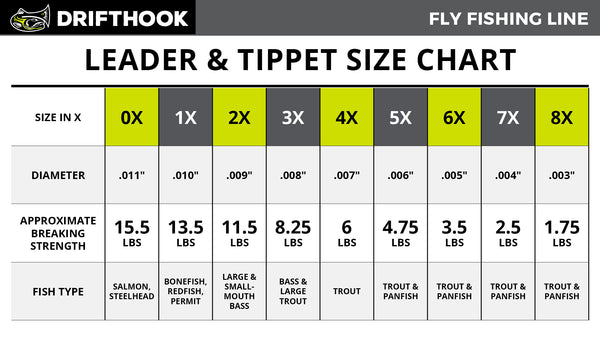
However, it is also wise to expect the best and plan for the worst when it comes to choosing your leader. What this means is that while you hope not to experience too many snags, it's likely that you will have at least a few. Something that means a more robust leader is a good idea. Use the thickest leader and tippet that you can get away with. I typically like to start with 5x and 6x. But If I know that I'm going to be getting into some more substantial trout, I will use a 3x or 4x and work my way down to a 5x tippet.
If you are streamer fishing, start with 4x. You will be moving the fly so fast in the water that the tippet does not play into effect as much as it does when your dead drifting a dry fly or a nymph. 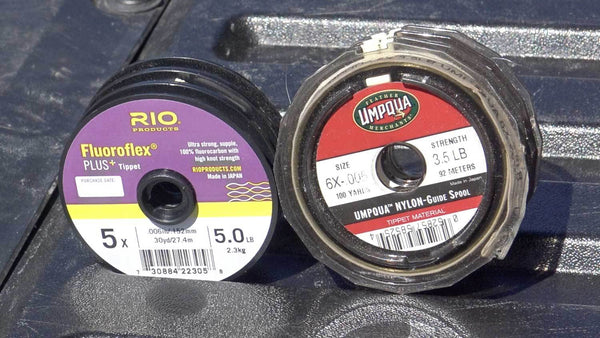
Wear Proper Clothing
Next, let's take a look at the type of clothing that you will need to be successful at fly fishing in a river. Chest waders are at the top of this list because if you are going to stand in a river all day, you will want something keeping your lower two thirds dry. Just be sure to pick some lighter weight ones for the summer months if you're going to stay cool, calm, and collected enough to land that fish.
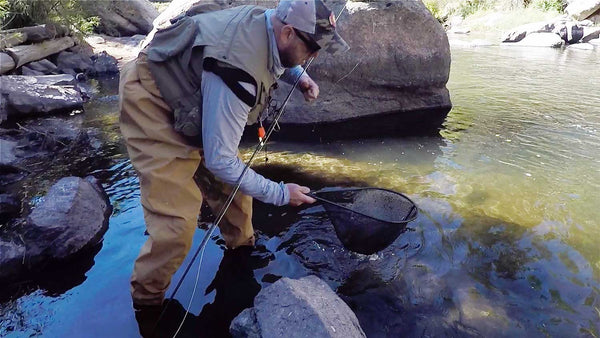
Additionally, river beds can be rocky and uneven ground, not to mention the fact that they are submerged in water that is often running at speed. With this in mind, making sure your wader boots have soles with a good grip. At one time, I was a huge fan of felt soles. But there is a movement across the nation to band these as they carry aquatic nuisances like zebra muscles from one fishery to the next. Many companies are making great rubber-soled boots with multiple traction additions such as studs or plates.

Experiment with what you like best as river bottoms change from one river to the next, and what might be right on a tailwater might be to slick on a freestone river.
You also need to remember that the purpose of your fly fishing apparel is it's not just staying dry and warm while in the water. One of the most important things about what you wear is that it helps you to blend in with your surroundings. Something essential if you don't want to signal to the fish exactly where you are, and so spook them out of biting.
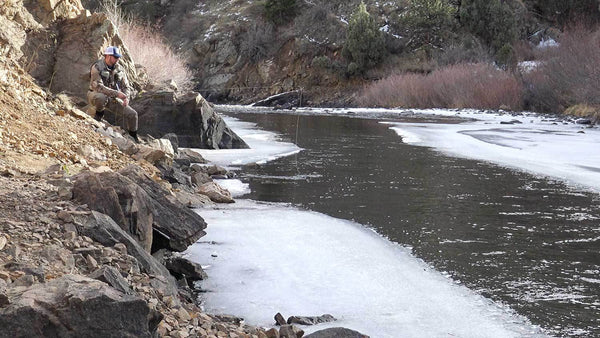 With that in mind, bright colors are a no-no for sure. Go for muted tones instead, such as khaki, brown, and grey. When you find out where you are fishing, check out some local pictures to see what the background is, and choose your attire appropriately.
With that in mind, bright colors are a no-no for sure. Go for muted tones instead, such as khaki, brown, and grey. When you find out where you are fishing, check out some local pictures to see what the background is, and choose your attire appropriately.
Finally, when it comes to fly fishing clothing for the river, you will need some protection from the glare of the sun. Hats in the cap or bucket style are high for this, and a good pair of wrap-around sports sunglasses will stop the glare of the light bouncing off the water and into your eyes. Something that can be a real problem if you are relying on visual queues to tell you when you have a bite.
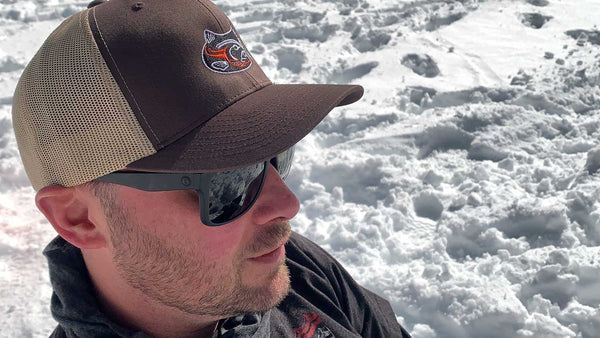
Not only do polarized sunglasses help with the glare, but they are also crucial for safety. If a line snaps or you cast wrong into the wind, you don't want your day ended short heading to the hospital to get a fly out of your eye.
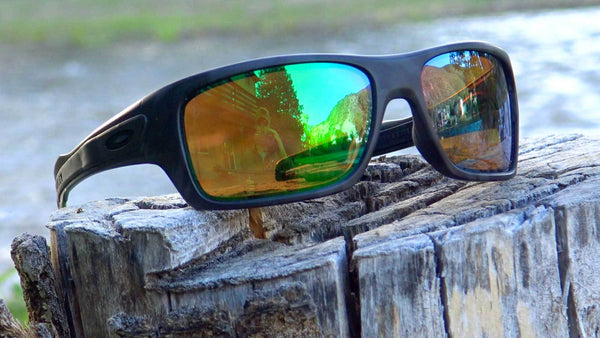
Fly Fishing Techniques for the River
After you have thoroughly kitted yourself out, and chosen the right location and seasons to fish, there is another issue to consider. That is the actual techniques that you will use when you are out on the river.
There are three main ones to choose from: nymph, dry, and streamer. Let's begin by taking a look at nymph fishing.
Nymph Fly Fishing
Nymphs are a type of fly that is designed to replicate the insects that are in the pupa and emerger stage. This type of fly fishing will be the most productive year around as these stages are below the water, where fish spend more than 90% of there time.

Nymph fly fishing can be an extremely active approach to fly fishing if you approach the right way. Some people will say that it is just mindless bobber lobbing, but I disagree. You have to consider everything that is happening under the water to be successful. Here is a quick video to get you started on nymph fly fishing.
Dry Fly Fishing
Dry fly fishing, by contrast, is a technique that is quite different from using a nymph. Yes, it is a visual technique; that is, you have to watch for movement as the fish rises to take your fly.
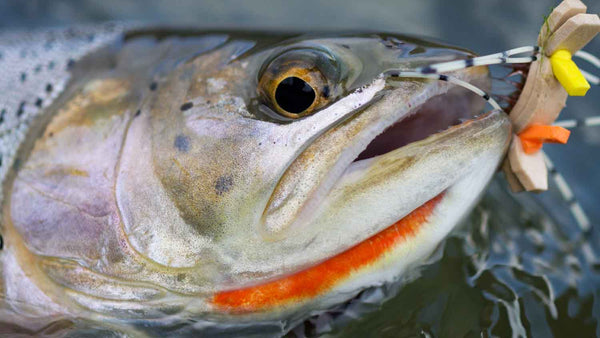
However, dry flies are typically cast upstream. They are also designed to bob on top of the water to attract the attention of the fish. Unfortunately, dry flies may not be the best choice for beginner anglers. The reason being that a certain level of control is needed to ensure your line and leader hit the water just right. And mending of the line can be a little more challenging if you're trying to reach a faraway target.
Dry flies are going to be the easiest to learn how to cast, but you will have significantly more catches nymph fishing.
Streamer Fly Fishing
Finally, the other option to consider is streamer fishing. This is as close as it comes to your typical lure fishing and is the most active style of fly fishing. After you cast your fly, you are continually retrieving the line to make your fly look like baitfish and other aquatic lifeforms fleeing from there prey. This can be one of the most exciting as you will most likely see your fish chasing down your fly before devouring it. Typically large trophy browns are caught on streamers.
Casting Techniques for Fly Fishing a River
Now, at this point, you may be thinking, well, that is all very well and good, but how exactly do I cast my line? Well, the truth of the matter is that experience fly fishers will choose from several different casting techniques.
However, for the novice, the overhead cast is the simplest and so best choice. The overhead cast consists of raising your rod, so the line is behind you and overhead. Then bring it forward in a quick but not too heavy whipping motion.
Of course, you can find plenty of in-depth descriptions of the overhead style of casting online. Although, a video like the one above is probably the fastest way to master this cast. Once you have this one down, all the others we are a lot easier to grasp as well.
Pick The Right Flies
Finally, a post on how to start fly fishing wouldn't be much good without taking some time to discuss the actual flies themselves.
Of course, the concept of choosing the right, or even perfect fly is one that is much debated. In fact, for many of us, picking the flies we will use is a very personal thing. However, there are some guidelines and recommendations that can help you make the most effective fly for your river fishing trip.
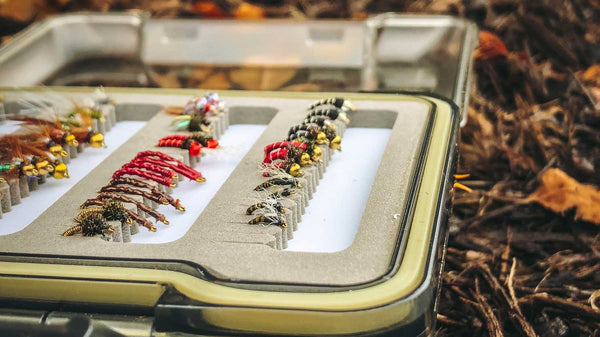
The first is to try to match the fly you use to the natural prey of the fish. Here it is crucial to consider both the species you are looking to catch and the location you will be fishing in.
At Drifthook, we have created a fly fishing system that takes the guesswork out the fly selection and gets you catching fish the first time your on the water guaranteed.
We call it Systematic fly selection. For more on this system check out our article here.
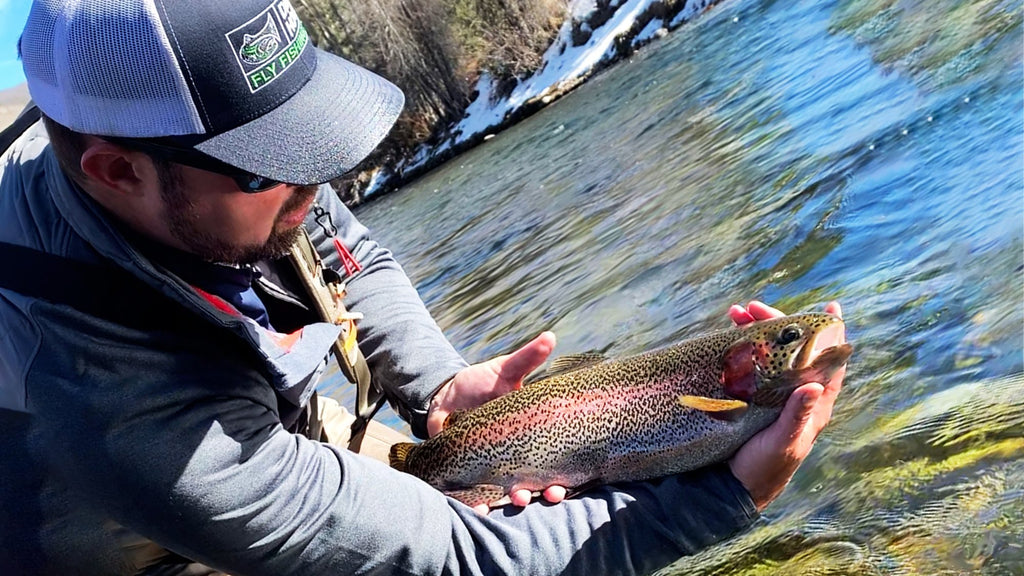
About the Author
Matthew Bernhardt, a third-generation Coloradan, grew up at the forefront of the state’s fly-fishing revolution, enjoying time on the water, side by side with experienced guides and lifelong anglers.
By combining his passion for fly-fishing with input from other experienced fly-fishers and guides and his fine arts degree from Colorado State University, Matthew spent five years carefully developing the Drifthook Fly Fishing System, built to help every angler catch more trout.
When he’s not spending time with his wonderful family, you’ll find him out on the water catching MONSTER trout, and he anxiously looks forward to the day when his kids are old enough to join him there.








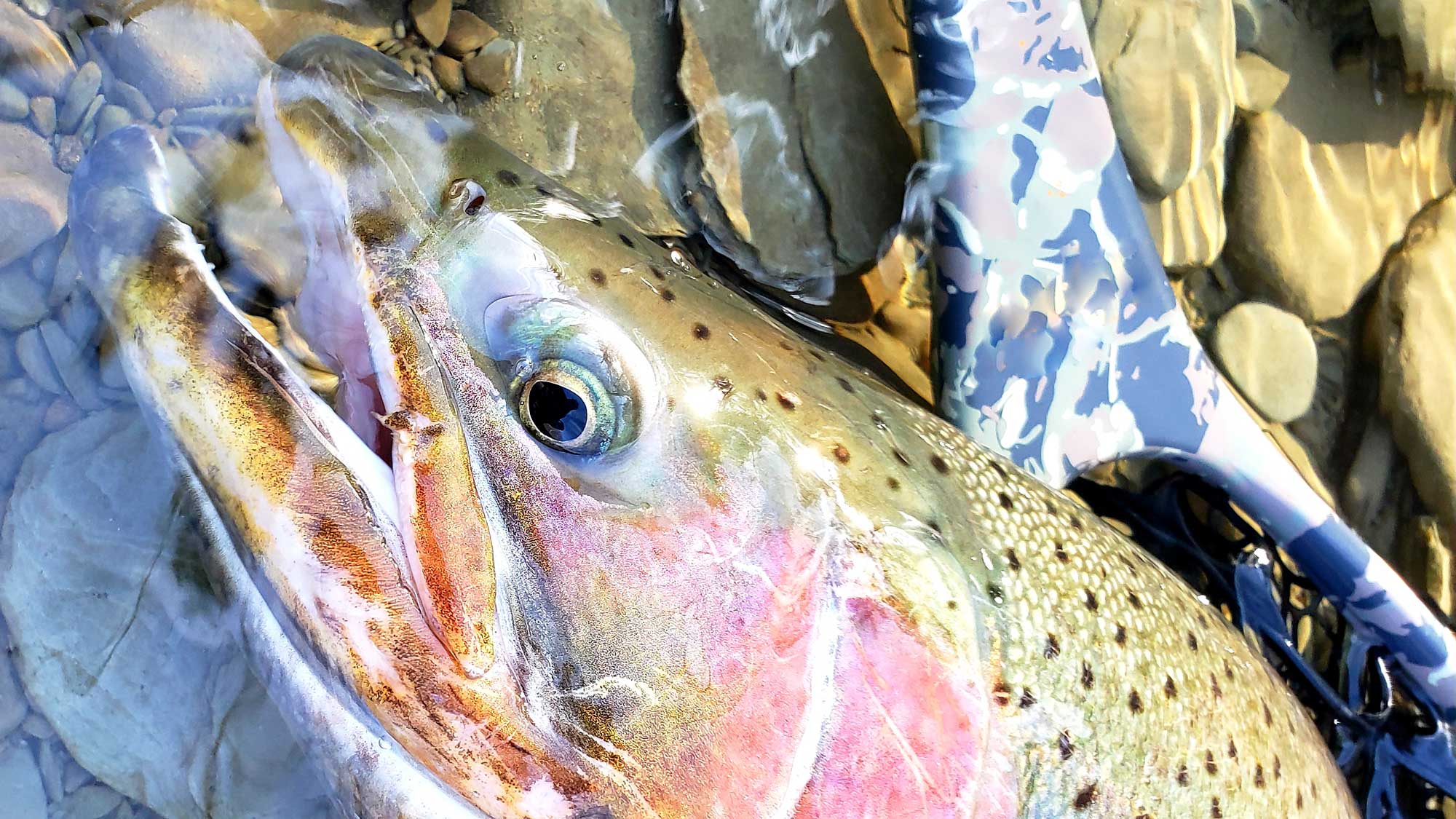
1 comment
Thomas
Great refresher training for beginner fly fishermen. I have used this late winter early spring to get my equipment in order, practice casting in the back yard and go the a nearby river once a week to practice… not necessarily fish. Although I have caught fish during these excursions, my focus has been to study the water and action of the fish; seine the water and match the fly to the hatch; and cast. Due to the foliage on the banks, the majority of my cast are roll cast or swing cast (not easily practiced in the backyard). Nonetheless, this approach has allowed me to gradually develop proficiency in preparation for the upcoming high season. Thank you for all of the training videos and the Drifthook Fly System. My next goal is to expand my horizons and introduce streamer fly fishing into my program.
Great refresher training for beginner fly fishermen. I have used this late winter early spring to get my equipment in order, practice casting in the back yard and go the a nearby river once a week to practice… not necessarily fish. Although I have caught fish during these excursions, my focus has been to study the water and action of the fish; seine the water and match the fly to the hatch; and cast. Due to the foliage on the banks, the majority of my cast are roll cast or swing cast (not easily practiced in the backyard). Nonetheless, this approach has allowed me to gradually develop proficiency in preparation for the upcoming high season. Thank you for all of the training videos and the Drifthook Fly System. My next goal is to expand my horizons and introduce streamer fly fishing into my program.